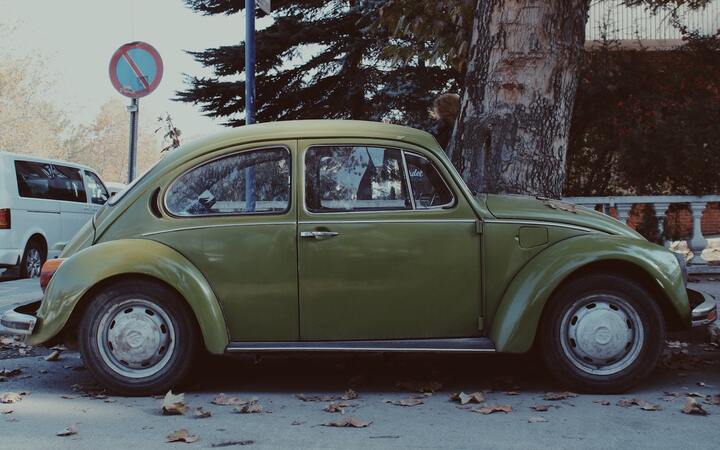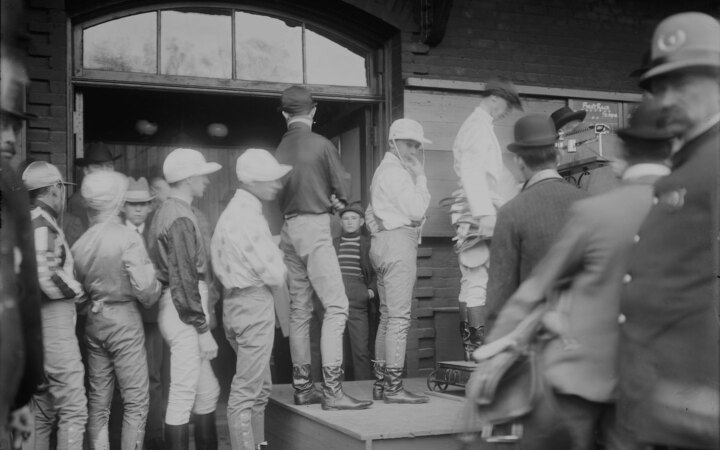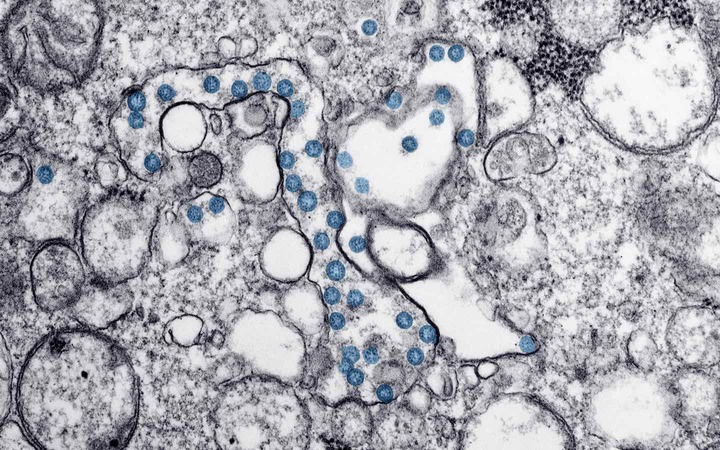Is the US in the midst of a homelessness crisis? Many people think so, but that’s largely based on based on anecdotes. What does the data say?
At a glance, this doesn’t look very crisisy. Since 2015, things have gone up by less than three percent.
Still, I think there is a crisis, we just have to work harder to see it. We need to look at different locations, rates of change, different types of homelessness, and mental health and substance abuse issues. Let’s do that.
Homelessness in general
Homelessness is much higher in some places.
The rate of homelessness varies hugely between different states. Here’s the percentage of the population in each state that was homeless in 2020.
In Mississippi it is 1 in 2500 (0.04%), while in New York State it is 1 in 210 (0.47%). That’s a huge difference.
Now, when we talk about a crisis, there’s an implication that things are getting worse. (You don’t hear much about the everyone you love will die and be forgotten “crisis”…) We already saw that things are pretty stable at the national level. How are things changing in individual states?
Homelessness is increasing in some places and decreasing in others.
Here’s the change between 2015 and 2020, again as a percentage of each state’s population.
The general pattern is increases close to California and decreases close to Florida. The exceptions are the random huge decreases in Nevada and North Dakota (maybe because of the end of the fracking boom?), and the confusing mess in the Northeast.
This is a relatively simple story so far, but I don’t think it fully captures what’s going on. We have to go deeper.
Types of homelessness
There are different types of homelessness.
Some people run out of money, get evicted, and stay at a shelter for a few weeks before moving in with family and eventually getting back on their feet. Other people have mental health issues and stay on the street for years. When we talk about a “homelessness crisis”, we should try to distinguish these different situations.
Let’s back up. Where is all this data coming from? Well, every year during the last 10 days of January, the US tries to count every homeless person. This is done by hundreds of local government organizations and nonprofits that cover almost the entire country. They must participate in the counting or they won’t get any funding from the US Department of Housing and Urban Development (HUD), which collects all the data.
We’ll look at two attributes that people get during this count. First, people are classified as sheltered or unsheltered. Someone is sheltered if they are staying in an emergency shelter, transitional housing program, or a safe haven. Someone is unsheltered if they’re staying in a vehicle, an abandoned building, or on the street. Second, people are chronically homeless if they’ve been so for at least a year, and otherwise non-chronically homeless.
Aside: Technically—because nothing can be simple—the definition of “chronically homeless” is much more complex. You also qualify if you’ve been homeless for a total of a year in the last three years, plus that happened in at least four episodes, plus those episodes were separated by at least a week. Yes, that means that someone homeless their entire life except the first week of each year is “non-chronic”, and yes that is crazy, but probably it never happens and anyway these categorizations are done by random people around the country who may not much care about the legalistic definition anyway. Oh, and also, this changed in 2016.
So, what types of homelessness does the US have?
Most homeless are non-chronic, and most non-chronic homeless are sheltered. But the chronic homeless are usually unsheltered.
Here are the fractions of people that fell into each of the four possible groups in 2020.
| Non-Chronic | Chronic | |
| Sheltered | 53.5% | 7.6% |
| Unsheltered | 25.8% | 13.2% |
Here’s how I think about this:
- Most homeless are non-chronic (around 80%).
- The non-chronic homeless are mostly sheltered (around 2/3).
- The chronic homeless are mostly unsheltered (around 2/3).
That’s the overall mix. But we have to worry about two things. First, is the mix changing over time? And second, how does the mix vary in different places?
Unsheltered and chronic homelessness is increasing.
Unfortunately, the mix is changing, and for the worse. The “best” type of homelessness (sheltered and non-chronic) is decreasing, while the other types are increasing.
Since it’s a bit hard to see, here’s the number of people in each group in 2020 divided by the number in 2015:
| Non-Chronic | Chronic | |
| Sheltered | 87.5% | 119.3% |
| Unsheltered | 131.5% | 128.4% |
While sheltered and non-chronic homelessness remains the most common, it actually decreased by around 12.5% since 2015, whereas all the other types have increased by around 25%.
OK, but how do things look in different places?
Different types in different places
Chronic and unsheltered homelessness is much more common in some places than others.
Let’s compare New York and California:
Homelessness overall is similarly high in both places—0.47% in New York and 0.41% in California. But California has much more unsheltered and chronic homelessness.
Aside: Did you know that there is a constitutional right to shelter in New York? This is a result of a 1979 New York State Supreme Court decision. Two other places have a weaker version of this. Massachusetts has a mandate from a 1983 law but it only applies to families, not individuals. The District of Columbia guarantees shelter to families year-round, and to individuals when the temperature is below 32° F or above 95 °F (below 0° C or above 35 °C).
Anyway, we can picture the situation for all states by visualizing the four types of homelessness on a map. Here they all are, each as a percentage of the state’s population. (Click for a .pdf if you want to look closer.)
For sheltered non-chronic homelessness, the West Coast isn’t exceptional. Instead, the standouts are New York at 0.42% and—press your face against the screen—the District of Columbia at 0.49%. These are followed by Massachusetts at 0.23% and Alaska at 0.20%.
But unsheltered chronic homelessness is very different. It’s almost nonexistent in some places—it’s 0.10% in California and 0.08% in Hawaii, but 0.0013% in Wisconsin. In Wisconsin, that is 80 people total. In California, that’s 42,195.
However, let me remind you—I can’t emphasize this enough—this survey is done in late January, when it’s cold in New York and stupidly cold in Wisconsin. You have to imagine that things would look different if things were done in Summer, though it’s hard to quantify. Still, the difference might be significant in that almost all homeless people in cold places have at least some occasional contact with social services.
OK. The types of homelessness are different in different places, and they are changing over time. But how are they changing in each place? We still need to go deeper.
Unsheltered and chronic homelessness is getting worse in some places, particularly the West coast.
How are the different types of homelessness changing over time in each state? Let’s again contrast New York and California:
The situation in New York is reasonably stable since 2015, albeit at very high levels. Meanwhile, California has a small decline in sheltered non-chronic homelessness, but big increases in the other groups.
Other places are different. For example, in Florida, everything is decreasing at once.
What does the rest of the country look like? Remember, that for the country as a whole, we saw above that sheltered non-chronic homelessness is decreasing, and the other categories are increasing.
But what about individual states? Since it’s not convenient to look at 50 different charts, I made four maps to show the change in each type of homelessness between 2015 and 2020, again as a percentage of each state’s population. In each of these, grey is a decrease, white is no change, and a non-grey color is an increase. (Click for a .pdf to zoom.)
How should we think about this? Here’s my best attempt at a summary:
- Sheltered non-chronic homelessness decreased almost everywhere.
- All homelessness declined in Florida and places near Florida.
- Chronic and unsheltered homelessness increased a lot in California and places near California.
There are some exceptions. For one thing, despite being close to California, Nevada and some of the Montana-esque states saw big decreases in certain categories. For another, the Northeast is weird and defies any attempt to summarize. Sheltered non-chronic homelessness decreased a lot in Massachusetts and Vermont but barely changed in New York or New Hampshire. Every other category is a random mishmash with no pattern. I tell you, on my worst days it’s almost like reality is just completely indifferent to our desires to understand it with tidy little narratives.
Drugs and mental health
And what about meth? Theories abound that mental health and substance abuse are a huge part of the homelessness crisis.
Well, the yearly homelessness survey collects data on if the homeless are “severely mentally ill” or suffer from “chronic substance abuse”. I can’t figure out exactly how these are defined. It’s implied that it’s done by literally asking people, but I think it varies from place to place.
Unfortunately, HUD doesn’t publish data on these numbers. However, they do publish reports, both for the entire nation, for individual states, and for each individual region.
So, I did the sensible thing. I downloaded the .pdf files for each of the 6082 different reports, wrote a script to convert each .pdf to plain text, wrote a parser for that text, compensated for 8 billion inconsistencies in how the reports were laid out, damn you HUD, damn you to hell, extracted the data for each of the above categories, and made plots.
Nationally, there is only a small uptick in mental illness and substance abuse.
Blue is people with mental health issues, while orange is substance abuse. Some people will be in both categories, but we don’t know how many. (My guess is a lot because they’re strongly correlated.) Grey is all people, including those with no issues.
Like the other national data, this doesn’t scream crisis. If anything, it’s a bit reassuring. We already knew that unsheltered homelessness was increasing, but here we see that mental health and substance abuse aren’t increasing at the same rate.
Next, of course, we want to know how this looks in different places, and how it’s changing.
I made plots for each of the 437 regions and states (you can see them below). This data is quite noisy, which makes it a challenge to visualize. For example, here’s Los Angeles.
To get more reliable numbers, I combined sheltered and unsheltered homelessness, took the average of mental health and substance abuse, and then applied a smoothing function. I used the smoothed values below, which are hopefully less polluted by noise.
There are significant increases in mental illness and substance abuse in certain states.
How many homeless people are there in each state with severe mental illness of substance abuse problems? Here are the numbers in 2020.
Again, this is high if you’re close to California and in certain parts of the Northeast. This is pretty similar to the map of homelessness overall we started with, though you’ll see a few places that stand out more here, e.g. Nevada.
OK, and how are things changing?
Again, we have a crisis mostly in the West. California was already really high in 2015 and has gotten even higher. The real standout is Washington state, where things more than doubled. And sure enough, the plot for Seattle is stark.
Things just exploded between 2016 and 2017 and then went up from there. You might remember that 2016-2017 is exactly when meth metabolites in sewage in Seattle also exploded. Of course, that could just be a coincidence, or might be noise in either of these datasets. Still, I think we can see why people in Seattle might feel there’s a crisis. Maybe anecdotal knowledge ain’t so bad.
P.S. If you want to see data for your local state or city it is below.
All 50 states and DC.
Alabama

Alaska

Arizona

Arkansas

California

Colorado

Connecticut

Delaware

District of Columbia

Florida

Georgia

Hawaii

Idaho

Illinois

Indiana

Iowa

Kansas

Kentucky

Louisiana

Maine

Maryland

Massachusetts

Michigan

Minnesota

Mississippi

Missouri

Montana

Nebraska

Nevada

New Hampshire

New Jersey

New Mexico

New York

North Carolina

North Dakota

Ohio

Oklahoma

Oregon

Pennsylvania

Rhode Island

South Carolina

South Dakota

Tennessee

Texas

Utah

Vermont

Virginia

Washington

West Virginia

Wisconsin

Wyoming

All 387 local cities / regions.
(First choose a state, then choose a local region.)AK
Alaska Balance of State

Anchorage

AL
Alabama Balance of State

Birmingham Jefferson, St. Clair, Shelby Counties

Florence Northwest Alabama

Gadsden Northeast Alabama

Huntsville North Alabama

Mobile City & County Baldwin County

Montgomery City & County

Tuscaloosa City & County

AR
Arkansas Balance of State

Fayetteville Northwest Arkansas

Little Rock Central Arkansas

Southeast Arkansas

AZ
Arizona Balance of State

Phoenix, Mesa Maricopa County

Tucson Pima County

CA
Alpine, Inyo, Mono Counties

Amador, Calaveras, Mariposa, Tuolumne Counties

Bakersfield Kern County

Chico, Paradise Butte County

Colusa, Glenn, Trinity Counties

Daly City San Mateo County

Davis, Woodland Yolo County

El Dorado County

Fresno City & County Madera County

Glendale

Humboldt County

Imperial County

Lake County

Long Beach

Los Angeles City & County

Marin County

Mendocino County

Merced City & County

Napa City & County

Nevada County

Oakland, Berkeley Alameda County

Oxnard, San Buenaventura Ventura County

Pasadena

Redding Shasta, Siskiyou, Lassen, Plumas, Del Norte, Modoc, Sierra Counties

Richmond Contra Costa County

Riverside City & County

Roseville, Rocklin Placer County

Sacramento City & County

Salinas Monterey, San Benito Counties

San Bernardino City & County

San Diego City and County

San Francisco

San Jose Santa Clara City & County

San Luis Obispo County

Santa Ana, Anaheim Orange County

Santa Maria Santa Barbara County

Santa Rosa, Petaluma Sonoma County

Stockton San Joaquin County

Tehama County

Turlock, Modesto Stanislaus County

Vallejo Solano County

Visalia Kings, Tulare Counties

Watsonville Santa Cruz City & County

Yuba City & County Sutter County

CO
Colorado Balance of State

Colorado Springs El Paso County

Fort Collins, Greeley, Loveland Larimer, Weld Counties

Metropolitan Denver

CT
Bridgeport, Stamford, Norwalk, Danbury Fairfield County

Connecticut Balance of State

DC
District of Columbia

DE
Delaware Statewide

FL
Charlotte County

Citrus, Hernando, Lake, Sumter Counties

Columbia, Hamilton, Lafayette, Suwannee Counties

Deltona, Daytona Beach Volusia, Flagler Counties

Fort Pierce St. Lucie, Indian River, Martin Counties

Fort Walton Beach Okaloosa, Walton Counties

Ft Lauderdale Broward County

Ft Myers, Cape Coral Lee County

Gainesville Alachua, Putnam Counties

Hendry, Hardee, Highlands Counties

Jacksonville-Duval, Clay Counties

Lakeland, Winterhaven Polk County

Miami-Dade County

Monroe County

Naples Collier County

Ocala Marion County

Orlando Orange, Osceola, Seminole Counties

Palm Bay, Melbourne Brevard County

Panama City Bay, Jackson Counties

Pasco County

Pensacola Escambia, Santa Rosa Counties

Sarasota, Bradenton Manatee, Sarasota Counties

St. Johns County

St. Petersburg, Clearwater, Largo Pinellas County

Tallahassee Leon County

Tampa Hillsborough County

West Palm Beach Palm Beach County

GA
Athens-Clarke County

Atlanta

Augusta-Richmond County

Columbus-Muscogee

DeKalb County

Fulton County

Georgia Balance of State

Marietta Cobb County

Savannah Chatham County

GU
Guam

HI
Hawaii Balance of State

Honolulu City and County

IA
Des Moines Polk County

Iowa Balance of State

Sioux City Dakota, Woodbury Counties

ID
Boise Ada County

Idaho Balance of State

IL
Aurora, Elgin Kane County

Bloomington Central Illinois

Champaign, Urbana, Rantoul Champaign County

Chicago

Cook County

Decatur Macon County

DuPage County

East St. Louis, Belleville St. Clair County

Joliet, Bolingbrook Will County

Madison County

McHenry County

Peoria, Pekin Fulton, Tazewell, Peoria, Woodford Counties

Rock Island, Moline Northwestern Illinois

Rockford DeKalb, Winnebago, Boone Counties

South Central Illinois

Southern Illinois

Springfield Sangamon County

Waukegan, North Chicago Lake County

West Central Illinois

IN
Indiana Balance of State

Indianapolis

KS
Kansas Balance of State

Overland Park, Shawnee Johnson County

Topeka Shawnee County

Wichita Sedgwick County

KY
Kentucky Balance of State

Lexington-Fayette County

Louisville-Jefferson County

LA
Alexandria Central Louisiana

Lafayette Acadiana Regional

Louisiana Balance of State

Monroe Northeast Louisiana

New Orleans Jefferson Parish

Shreveport, Bossier Northwest Louisiana

Slidell Southeast Louisiana

MA
Attleboro, Taunton Bristol County

Boston

Cambridge

Cape Cod Islands

Fall River

Gloucester, Haverhill, Salem Essex County

Lynn

Massachusetts Balance of State

New Bedford

Pittsfield Berkshire, Franklin, Hampshire Counties

Quincy, Brockton, Weymouth, Plymouth City and County

Springfield Hampden County

Worcester City & County

MD
Annapolis Anne Arundel County

Baltimore

Baltimore County

Carroll County

Frederick City & County

Harford County

Howard County

Mid-Shore Regional

Montgomery County

Prince George's County

Wicomico, Somerset, Worcester Counties

ME
Maine Statewide

MI
Battle Creek Calhoun County

Dearborn, Dearborn Heights, Westland Wayne County

Detroit

Eaton County

Flint Genesee County

Grand Rapids, Wyoming Kent County

Grand Traverse, Antrim, Leelanau Counties

Holland Ottawa County

Jackson City & County

Lansing, East Lansing Ingham County

Lenawee County

Livingston County

Michigan Balance of State

Monroe City & County

Norton Shores, Muskegon City & County

Pontiac, Royal Oak Oakland County

Portage, Kalamazoo City & County

Saginaw City & County

St. Clair Shores, Warren Macomb County

Washtenaw County

MN
Dakota, Anoka, Washington, Scott, Carver Counties

Duluth St. Louis County

Minneapolis Hennepin County

Moorhead West Central Minnesota

Northeast Minnesota

Northwest Minnesota

Rochester Southeast Minnesota

Southwest Minnesota

St. Cloud Central Minnesota

St. Paul Ramsey County

MO
Joplin Jasper, Newton Counties

Missouri Balance of State

Springfield Greene, Christian, Webster Counties

St. Charles City & County, Lincoln, Warren Counties

St. Joseph Andrew, Buchanan, DeKalb Counties

St. Louis City

St. Louis County

MP
Northern Mariana Islands

MS
Gulf Port Gulf Coast Regional

Jackson Rankin, Madison Counties

Mississippi Balance of State

MT
Montana Statewide

NC
Asheville Buncombe County

Chapel Hill Orange County

Charlotte Mecklenburg County

Durham City & County

Fayetteville Cumberland County

Gastonia Cleveland, Gaston, Lincoln Counties

Greensboro, High Point

North Carolina Balance of State

Northwest North Carolina

Raleigh Wake County

Wilmington Brunswick, New Hanover, Pender Counties

Winston-Salem Forsyth County

ND
North Dakota Statewide

NE
Lincoln

Nebraska Balance of State

Omaha, Council Bluffs

NH
Manchester

Nashua Hillsborough County

New Hampshire Balance of State

NJ
Atlantic City & County

Bergen County

Burlington County

Camden City & County Gloucester, Cape May, Cumberland Counties

Elizabeth Union County

Jersey City, Bayonne Hudson County

Lakewood Township Ocean County

Monmouth County

Morris County

New Brunswick Middlesex County

Newark Essex County

Paterson Passaic County

Salem County

Somerset County

Trenton Mercer County

Warren, Sussex, Hunterdon Counties

NM
Albuquerque

New Mexico Balance of State

NV
Las Vegas Clark County

Nevada Balance of State

Reno, Sparks Washoe County

NY
Albany City & County

Binghamton, Union Town Broome, Otsego, Chenango, Delaware, Cortland, Tioga Counties

Buffalo, Niagara Falls Erie, Niagara, Orleans, Genesee, Wyoming Counties

Columbia, Greene Counties

Elmira Steuben, Allegany, Livingston, Chemung, Schuyler Counties

Franklin, Essex Counties

Glens Falls, Saratoga Springs Saratoga, Washington, Warren, Hamilton Counties

Ithaca Tompkins County

Jamestown, Dunkirk Chautauqua County

Jefferson, Lewis, St. Lawrence Counties

Kingston Ulster County

Nassau, Suffolk Counties

New York Balance of State

New York City

Newburgh, Middletown Orange County

Poughkeepsie Dutchess County

Rochester, Irondequoit, Greece Monroe County

Rockland County

Schenectady City & County

Syracuse, Auburn Onondaga, Oswego, Cayuga Counties

Troy Rensselaer County

Utica, Rome Oneida, Madison Counties

Wayne, Ontario, Seneca, Yates Counties

Yonkers, Mount Vernon Westchester County

OH
Akron, Barberton Summit County

Canton, Massillon, Alliance Stark County

Cincinnati Hamilton County

Cleveland Cuyahoga County

Columbus Franklin County

Dayton, Kettering Montgomery County

Ohio Balance of State

Toledo Lucas County

Youngstown Mahoning County

OK
Norman Cleveland County

North Central Oklahoma

Northeast Oklahoma

Oklahoma Balance of State

Oklahoma City

Southeastern Oklahoma Regional

Southwest Oklahoma Regional

Tulsa City & County

OR
Central Oregon

Clackamas County

Eugene, Springfield Lane County

Hillsboro, Beaverton Washington County

Medford, Ashland Jackson County

Oregon Balance of State

Portland, Gresham Multnomah County

Salem Marion, Polk Counties

PA
Beaver County

Bristol, Bensalem Bucks County

Chester County

Eastern Pennsylvania

Erie City & County

Harrisburg Dauphin County

Lancaster City & County

Lower Merion, Norristown, Abington Montgomery County

Philadelphia

Pittsburgh, McKeesport, Penn Hills Allegheny County

Reading Berks County

Scranton Lackawanna County

Upper Darby, Chester, Haverford Delaware County

Western Pennsylvania

Wilkes-Barre, Hazleton Luzerne County

York City & County

PR
Puerto Rico Balance of Commonwealth

South-Southeast Puerto Rico

RI
Rhode Island Statewide

SC
Charleston Low Country

Columbia Midlands

Greenville, Anderson, Spartanburg Upstate

Sumter City & County

SD
South Dakota Statewide

TN
Appalachian Regional

Central Tennessee

Chattanooga Southeast Tennessee

Jackson West Tennessee

Knoxville Knox County

Memphis Shelby County

Morristown Blount, Sevier, Campbell, Cocke Counties

Murfreesboro Rutherford County

Nashville-Davidson County

Upper Cumberland

TX
Amarillo

Austin Travis County

Bryan, College Station Brazos Valley

Dallas City & County, Irving

El Paso City & County

Fort Worth, Arlington Tarrant County

Houston, Pasadena, Conroe Harris, Fort Bend, Montgomery Counties

San Antonio Bexar County

Texas Balance of State

Waco McLennan County

Wichita Falls Wise, Palo Pinto, Wichita, Archer Counties

UT
Provo Mountainland

Salt Lake City & County

Utah Balance of State

VA
Alexandria

Arlington County

Charlottesville

Fairfax County

Fredericksburg Spotsylvania, Stafford Counties

Harrisonburg, Winchester Western Virginia

Loudoun County

Lynchburg

Newport News, Hampton Virginia Peninsula

Norfolk, Chesapeake, Suffolk Isle of Wight, Southampton Counties

Portsmouth

Prince William County

Richmond Henrico, Chesterfield, Hanover Counties

Roanoke City & County, Salem

Virginia Balance of State

Virginia Beach

VI
Virgin Islands

VT
Burlington Chittenden County

Vermont Balance of State

WA
Everett Snohomish County

Seattle King County

Spokane City & County

Tacoma, Lakewood Pierce County

Vancouver Clark County

Washington Balance of State

WI
Madison Dane County

Milwaukee City & County

Racine City & County

Wisconsin Balance of State

WV
Charleston Kanawha, Putnam, Boone, Clay Counties

Huntington Cabell, Wayne Counties

West Virginia Balance of State

Wheeling, Weirton Area

WY
Wyoming Statewide
























































